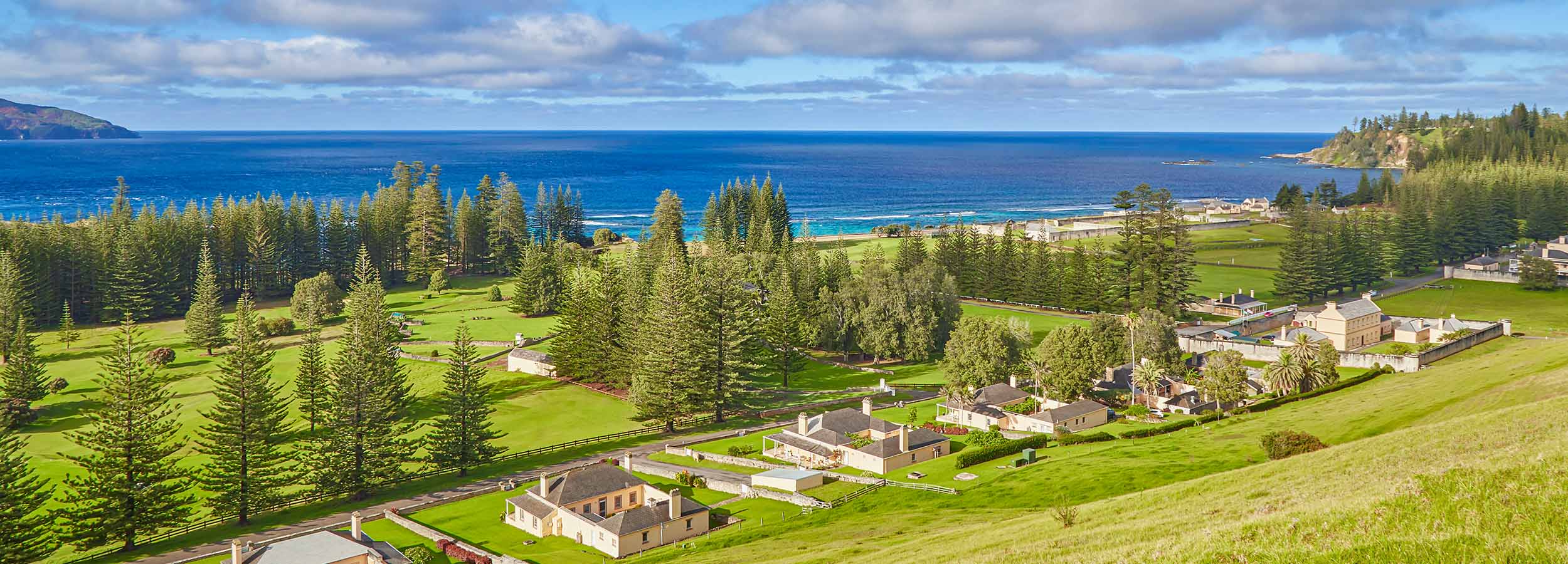Overview
Norfolk Island is a tiny remote Australian territory in the South Pacific Ocean with a population of just over 2,200. Norfolk Island Regional Council (NIRC) provides a broad range of services to the community of Norfolk Island and Commonwealth-funded state services.
As there are no submarine cables connecting the island, the population is entirely reliant on satellite for its telecommunications services. The existing solution of a 10-metre satellite and O3b dishes was outdated and slow and could not meet the island’s increasing demand for high-speed, low-latency internet and mobile data services. This led to a search for solutions that can deliver improved Internet capacity and service level agreements (SLAs), as well as provide dedicated capacity to key government services operating on the island.
-
0xboost to internet capacity
-
0%uptime achieved
-
0Mbpsdownload and 50Mbps upload speeds
Challenge
Disruptive approach to a better solution
In NIRC’s request for proposal, software-defined wide area networking (SD-WAN) had been a key requirement. The council believed that SD-WAN would be able to identify and steer traffic across the geostationary and medium Earth orbits (GEO and MEO) satellite links, which could help NIRC achieve the best concurrent use of the two satellites’ capacity.
However, after multiple site visits and technical workshops, the Telstra team found that more could be achieved without the need for SD-WAN. The team showed NIRC that the cost of satellite capacity is far too great to be wasted in the virtual private network (VPN) tunnel overheads. This is because the gain from SD-WAN would immediately be lost by the need to build end-to-end VPN tunnels for these technologies.
Solution
A flexible multi-satellite solution
Telstra’s solution leverages GEO and MEO satellite services to provide the teleport and technology diversity, satellite constellation, and weather resilience required to achieve 100% uptime. This was combined with a fully managed, traffic-engineered network overlay that not only increases Norfolk Island’s internet capacity four-fold but does so with an SLA that rivals diverse fixed fibre solutions.
The proposed architecture from Telstra is scalable to accommodate future upgrades of the existing MEO and GEO services, and supports the integration of additional satellite services, such as LEO (low Earth orbit) as part of an overall managed network solution, without additional hardware or licences.
The overall proposal achieved the objective of getting the most out of the installed infrastructure, yet in a simpler and a more cost-effective way.
Impact
Thinking beyond today, preparing for tomorrow
Recognising that NIRC had a lean team on the ground, the Telstra team put together a complete managed services offering on the table. This included project management to ensure a successful phased implementation, and customer success management, coupled with our Managed Network services, for reporting and ongoing management.
Telstra currently provides extensive internet services to federal and state government bodies in education and health on Norfolk Island, including Queensland Education and Health. A Telstra-provided internet solution means Norfolk Island’s education and health services can be carried end-to-end without ever leaving Telstra’s internet backbone, which serves as another key differentiator against the competition.
It is the overall thought leadership in providing an end-to-end solution that encompasses satellite, internet, and terrestrial services from the Telstra team–and wrapping it with Telstra’s customer assurance and service management framework–that makes this another customer success story.

